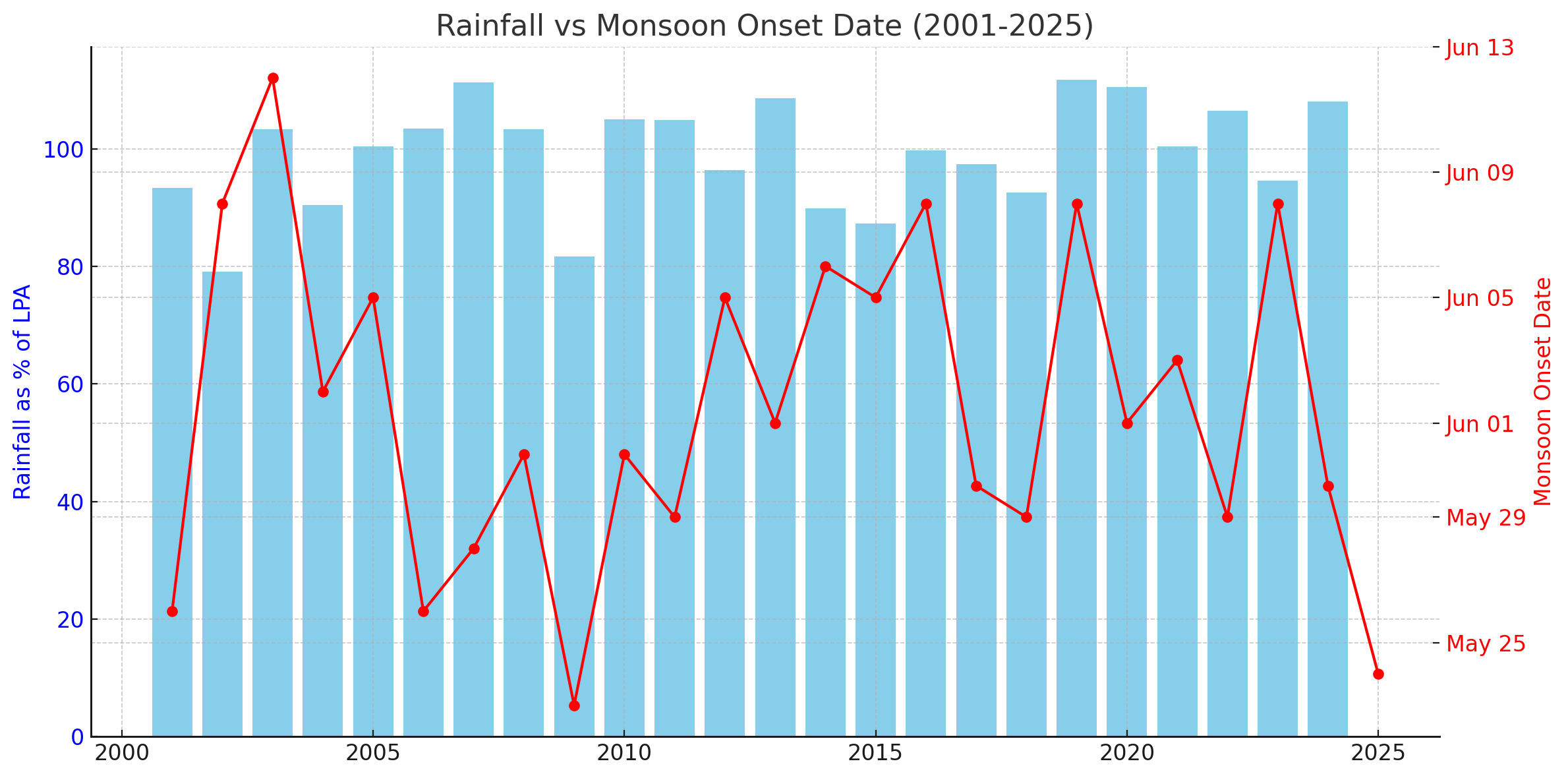.png)

Groupthink is the House View of BasisPoint’s in-house columnists.
May 26, 2025 at 11:42 AM IST
The Southwest Monsoon arrived in Kerala on May 24—a full week ahead of the usual June 1 calendar date, and three days earlier than the India Meteorological Department’s forecast. Its advance over Mumbai on Monday was even more dramatic: more than two weeks early, marking the city’s earliest monsoon onset in over 25 years. The early onset has sparked optimism for a good monsoon this year.
Historical data, however, reveals that an early onset does not always translate into sufficient overall rainfall. In fact, the earliest monsoon onset in the last 25 years was one of the driest seasons on record. In 2009, the monsoon kicked off on May 23—the earliest in 25 years—only to fizzle out. The country received just 82% of normal rainfall, marking one of the worst monsoon years in recent history.
Over the past 25 years, the Southwest Monsoon has arrived earlier than normal on 11 occasions. Of these, rainfall was normal or above normal in 10 years, and exceeded 100% of the long-period average in seven. But then, India has experienced generally favourable monsoons in recent years—normal or above normal in 21 out of the last 25 years.
Monsoon patterns have been changing over the years in terms of timing and distribution. While the average rainfall across the country has remained largely unchanged, the monsoon season is now longer.
According to the IMD, the monsoon now typically covers the entire country by July 8, a week earlier than the previous norm of July 15. Withdrawal from northwest India now begins around September 17—more than two weeks later than the earlier norm of September 1.
There is also evidence of a westward shift in monsoon activity, with Rajasthan receiving more rainfall than before, while regions like the northeast and Jharkhand are receiving less.
For 2025, the IMD has forecast an above-normal Southwest Monsoon, estimating rainfall at 105% of the long-period average. After the early onset, the IMD expects the monsoon to advance in more parts of the country in the coming days.

The monsoon is vital for Indian agriculture, accounting for about 75% of the country’s annual precipitation. Central and northwest India depend on it for more than 90% of their annual rainfall. It also plays a critical role in replenishing reservoirs and groundwater resources essential for irrigation.
Rainfall activity across the country has intensified in the last one week. The weighted average rainfall across the country was 38.2 mm (May 19-25), 170% above the long-period average. Though the monsoon has arrived on the mainland, the rainfall in May is not counted as part of the official monsoon season, which begins on June 1.
Early rains may provide relief from the heat and aid sowing, but they also bring challenges. Unseasonal rains can damage standing summer crops and lead to increased vegetable prices due to spoilage caused by a rise in moisture content.
The complex, shifting patterns of the monsoon—and the stark lessons from years like 2009—remind us that optimism must be tempered with caution. Effective planning, adaptive strategies, and vigilant monitoring must accompany every hopeful forecast. Otherwise, early hopes risk turning into hard lessons, and the nation’s agrarian backbone remains vulnerable to the unpredictability of a changing climate.




